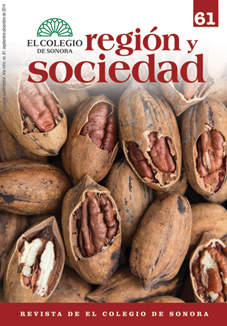 |
 |
 |
 |
 |
 |
 |
 |
 |
 |
 |
 |
Abstract
This article explores some of the conditions in which innovation is generated in a local environment, and discusses scenarios for collaboration between academic institutions and businesses to generate innovative projects. First, we explore issues of innovation and innovation dynamics based on the literature, then describe the methodology and analyze the information collected, drawing conclusions and presenting a proposal to optimize collaboration between higher-education institutions and businesses. The main finding relates to the importance of connecting the innovation agendas of the productive sector and academia, with the aim of generating a pattern of systemic innovation that translates into regional competitive advantage.References
Arrow, Kenneth. 1962. The Economic Implications of Learning by Doing. Review of Economic Studies 29 (1): 155-173.
Basalla, George. 1991. La evolución de la tecnología. Madrid: Editorial Crítica.
Bassanini, Andrea. 1997. Localized Technological Change and Path Dependence Growth, IIASA Interim Report.
Benavides, Oscar. 2008. De inventores a empresas: la historia económica de la innovación tecnológica. Bogotá: Universidad Externado de Colombia.
Capello, Roberta. 1999. Spatial Transfer of Knowledge in High Technology Milieux: Learning Versus Collective Lerning Processes. Journal of Regional Studies Association 33 (4): 353-365.
CONACYT. 2012. La actividad de CONACYT por entidad federativa 2008-2011. San Luis Potosí. http://www.siicyt.gob.mx/siicyt/cms/paginas/ActividadcoNAcyporEstado.jsp?pSel=
----------. 2008. Programa Especial de Ciencia y Tecnología 2008-2012. http://www.conacyt.gob.mx/Convocatorias/Varias/PECiTI.PDF
Dankhe, G.L. 1986. Investigación y comunicación. En La comunicación humana: ciencia social, compilado por C. Fernández Collado y G.L. Dankh. México.
Davelaar, E. J. 1991. Regional Economic Analysis of Innovation and Incubation. Brookefield: Averbury, Aldershot.
David, Paul. 2000. Path Dependence and Varieties of Learning in the Evolution of Technological Practice. En Technological Innovation as an Evolutionary Process, editado por John Ziman. Cambridge: Cambridge University Press.
Gobierno del Estado de San Luis Potosí. 2012. Actualización del Plan Estatal de Desarrollo 2009-2015. San Luis Potosí.
Howels, Jeremy. 1999. Regional Systems of Innovation? En Innovation Policy en Global Economy, editado por D. Archibugi, J. Howells y J. Michie, 67-93. Nueva York y Melbourne: Cambridge University Press.
Martínez Lobatos, Lilia. 2012. Formación para la innovación: el currículo ante las demandas de la nueva economía. México: Asociación Nacional de Universidades e Instituciones de Educación Superior.
Mokyr, Joel. 2000. Evolutionary Phenomena in Technological Change. En Technological Innovation as an Evolutionary Process, editado por John Ziman, 52-65. Cambridge: Cambridge University Press.
----------. 1998. Invention and Rebellion: Why do Innovations Occur at all? An Evolutionary Approach, in Neither Chance nor Necessity: Evolutionary Models and Economic History. Princeton: Princeton University Press.
----------. 1997. Are we living in the Middle of an Industrial Revolution? Federal Reserve Bank of Kansas City 82 (2): 18.
----------. 1990. The Lever of the Riches. Oxford: Oxford University Press.
Nelson, Richard y Sydney Winter. 1977. In Search of Useful Theory of Innovation. Research Policy 6: 36-76.
Ríos, Humberto y Juan Marroquín. 2013. Innovación tecnológica como mecanismo para impulsar el crecimiento económico. Evidencia Regional para México. Contaduría y Administración 58 (3): 11-37.
Romer, Paul. 1990. Endogenous Technological Change. The Journal oí Political Economy 98 (5): 71-102.
Rosenberg, Nathan. 1982. Inside in the Black Box Technology and Economics. Cambridge: Cambridge University Press.
Rozga, Ryszard. 2003. Sistemas regionales de innovación: antecedentes, origen y perspectivas. Convergencia 10 (33): 225-248.
Schumpeter, Joseph. 1997. La teoría del desenvolvimiento económico. México: Fondo de Cultura Económica.
----------. 1911. The Theory oí Economic Development: An Inquiry into Profits, Capital, Credit, Interest and the Business Cycle. New Brunswick: Transaction Publishers.
SEDECO. 2013. Panorama económico del estado de San Luis Potosí. Gobierno del Estado de San Luis Potosí.
SIICYT. 2012. Anexo estadístico del Informe general del estado de la ciencia y la tecnología, 2012. Capítulo II. Recursos humanos en ciencia y tecnología. http://www.siicyt.gob.mx/siicyt/cms/paginas/IndCientifTec.jsp
Torres, José y Paulina del Valle. 2009. Identificación de oportunidades estratégicas para el desarrollo del estado de San Luis Potosí. Monterrey: ITESM.
Vargas, Germán. 2008. Arquitectura del cambio organizacional: liderazgo, gestión del conocimiento e innovación tecnológica. Revista de Ingeniería 28: 9-14.
Ziman, John (editor). 2000. Technological Innovation as an Evolutionary Process. Cambridge: Cambridge University Press.
Open access policy
The authors who publish in región y sociedad accept the following conditions:
In accordance with the copyright laws, región y sociedad recognizes and respects the authors’ moral rights, as well as the ownership of property rights, which will be transferred to the journal to disseminate the articles in open access. región y sociedad does not charge the authors for submitting and processing articles for publication.
All the texts published by región y sociedad —with no exception— are distributed under a Creative Commons license 4.0 Attribution – Noncommercial (CC BY-NC 4.0 International), which allows third parties to use the publication as long as they mention the works’ authorship and the first publication in this journal.
The authors can enter into independent and additional contractual agreements for the nonexclusive distribution of the version of the article published in región y sociedad (for instance include it into an institutional repository or publish it in a book) as long as they clearly indicate that the work was published for the first time in región y sociedad.
For all the above, the author(s) must send the Letter of transfer of property rights of the first publication duly filled in and signed by the author(s). This letter can be sent by e-mail as a PDF to: region@colson.edu.mx






